Highlights:
- Quality Prairie Habitat
- Riparian Hardwood Habitat
- Access to the Colorado River
Trail Length: ~1.2 mi. round trip
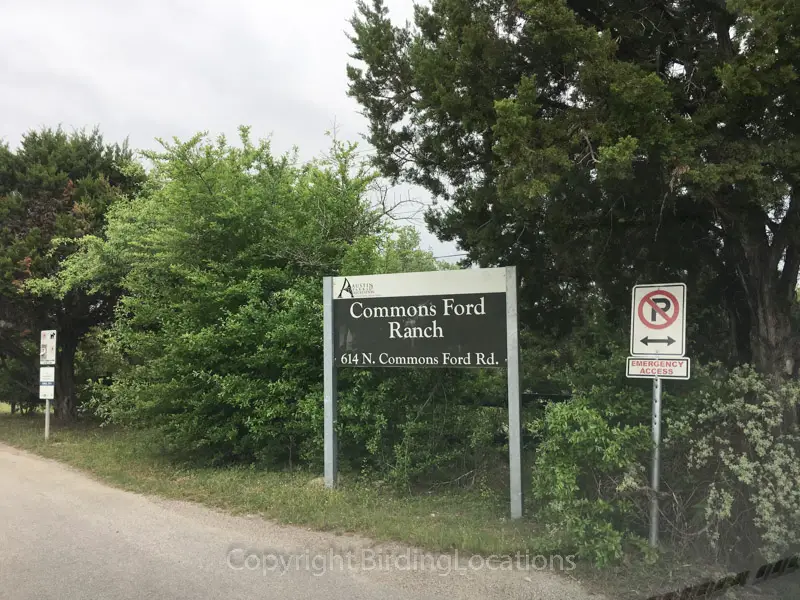
The Location
Prior to 2010 the central area of the park was overrun with invasive plants like Johnson Grass and KR Bluestem. What you see today is the result of years of restoration and reseeding work to bring back native plant species, and as a result has attracted more bird and wildlife species. The effort and money poured into this park has turned it into one of the best birding hotspots Austin has to offer.
There’s only one drivable road so navigating by car is easy. Parking is available under the trees near the creek, and further down by the old barn.
Weekends can get busy down by the river as people grill and bring their dogs, but otherwise this is not a highly trafficked park. It’s mostly gravel trails and natural area with few improved areas or amenities.
Winter birding in the prairie can be excellent, it’s possible to see 12 sparrow species and 6 wren species in a morning. Sedge Wren and Leconte’s Sparrow are the main prizes here.
Walk slow on the prairie trails or you’ll speed right past birds hiding in the grasses. Pause and give the birds a chance to pop up and move around. This is a great place to practice your sparrow identification skills.
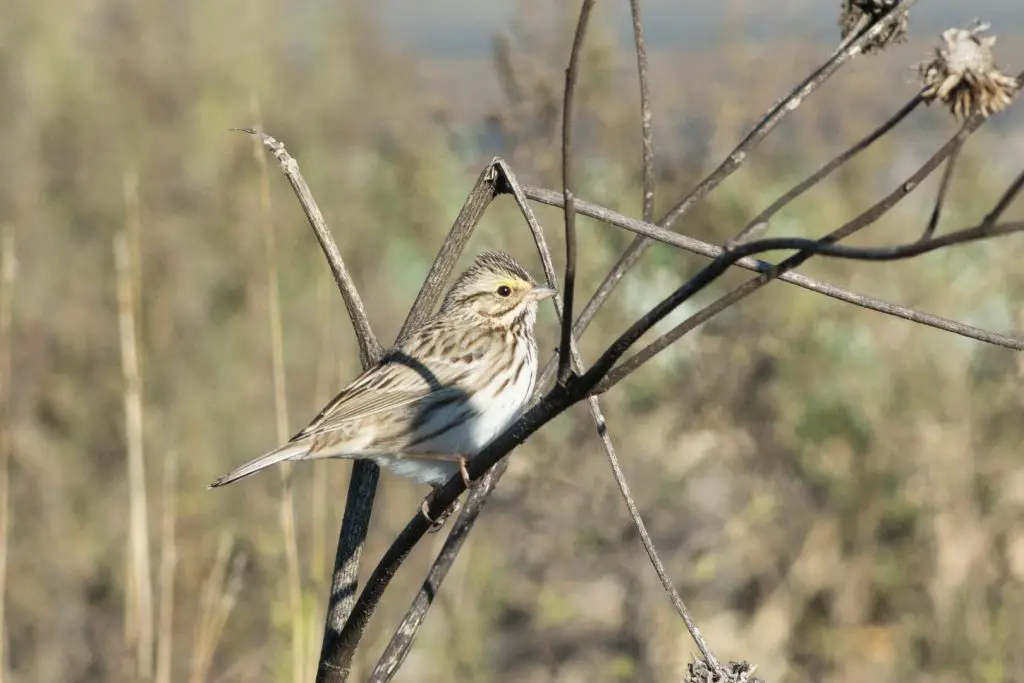
Large Pecans and other hardwoods grow along the creek near the middle of the property. This is a great place to see woodland species and can be especially good during the peak of spring migration in early May.
Up high are woodpeckers, warblers, occasional Golden-crowned Kinglets, and Barred Owls early in the morning. Down low you may see Fox Sparrow, Winter Wren, Hermit Thrush, Brown Thrasher, and Towhees.
Eastern Towhees have been spotted on and off in past winters. Highlights along the Colorado River have included Bald Eagle and Ringed Kingfisher, along with the usual duck species and Osprey.
Birding Recommendations
An easy but effective walking route here involves making one big loop that hits all the major habitats. As you drive in, go all the way back to the barn and park just off the pavement (gmaps).
The immediate area around the barn is almost always birdy, assuming you arrive early morning, so spend a few minutes here. Eastern Bluebirds, woodpeckers, and sparrows are usually moving about.

Next follow the trail that leads into the prairie. The trail name is Trail 3, but there may not be a sign.
As you walk, watch for small movements from within the grass that give away the birds hiding within. Expect good numbers of sparrows here in winter months.
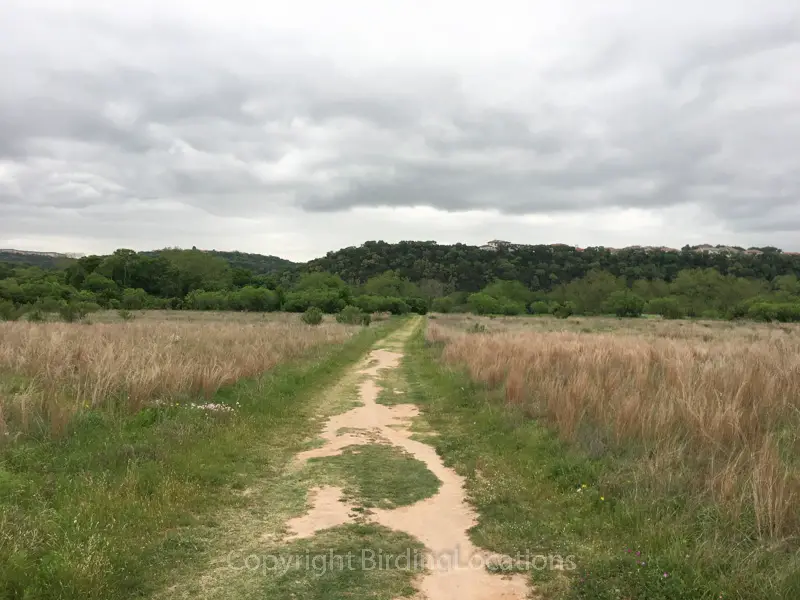
This is also where a Sedge Wren is most often heard and seen, so familiarize yourself with its call, and be careful not to confuse it with the more numerous House Wrens.
This open stretch of Trail 3 is also a good spot to scan for soaring raptors and flyovers since you have such an unobstructed view of the surrounding sky.
When the trail curves right the habitat will quickly become more shrubby and wooded. Dense grass and small trees on your left can easily hide birds. Sometimes if you stop and listen you’ll hear them rustling in the leaves, and sometimes they’ll pop up into view.
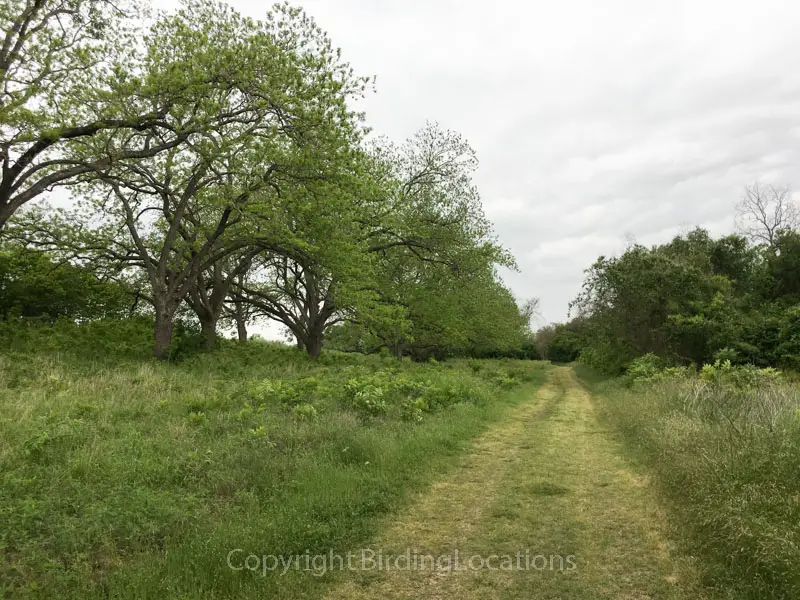
Once you make it to the mowed grassy area you’ll have open access to the river. Stand on the edge of the water and slowly scan the water and far bank for ducks, herons, egrets, and kingfishers. Cormorants may fly up or down the river.
Remember – Double-crested are more common in the winter, Neotropic are more common in the summer. Both are possible during spring and fall.
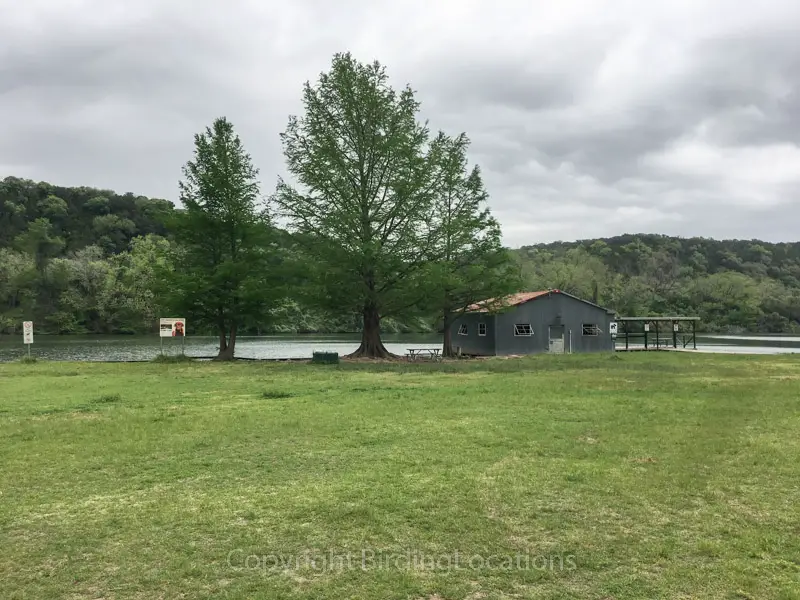
Ringed Kingfisher is possible along the river here, although uncommon. Listen for their loud machine gun rattle. Bald Eagles are also seen over the water at least a few times each winter and early spring.
When you’re ready to leave the river, continue on Trail 3 as it leads into the tall hardwoods along the creek. Cross the small foot bridge when you get to it and continue upstream.
This area is great for woodland species, and can be fantastic during spring migration in early May. Constantly stop and look up high into the trees for birds moving and flitting around. Sounds will really help cue you in to where the birds are here, so keep your ears open.
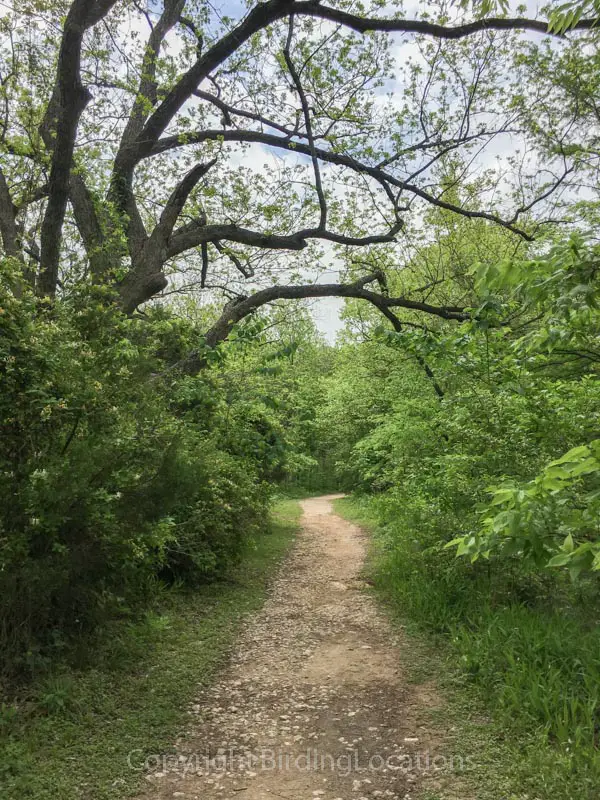
When the trail meets the small dirt parking area at the paved entrance road, simply follow the road back to the barn (to the right) and bird your way back to your vehicle.
Commons Ford really is one of the premier birding hotspots in Austin. Few other places in the area offer such a great mix of high quality habitat in one spot.
